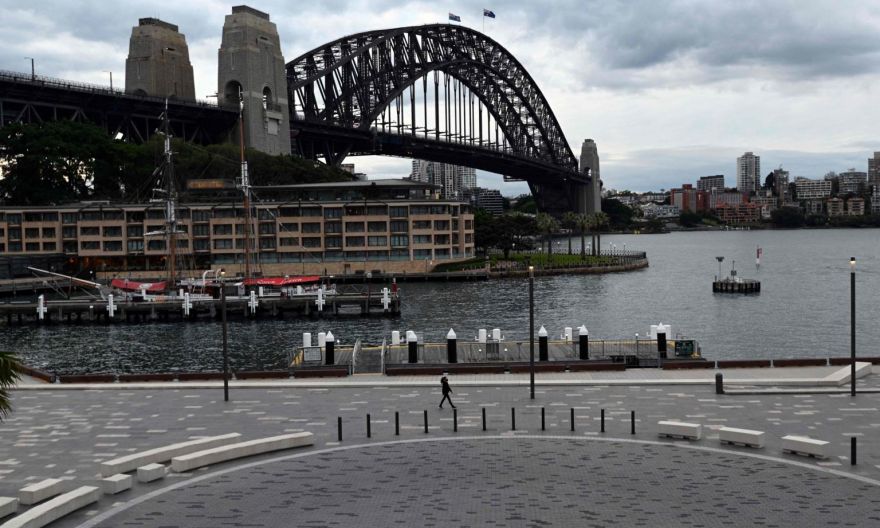Australia’s CPI spikes to highest since 2008 on Covid-19 jolt

(BLOOMBERG) – Australia’s inflation surged in the last quarter, joining developed-world counterparts in spiking from last year’s lockdown-induced weakness, though a renewed Covid-19 outbreak is set to damp pressures ahead.
Inflation accelerated to 3.8 per cent in the three months through June from a year earlier, the fastest pace since 2008, the statistics bureau said on Wednesday. But, highlighting one-off factors like free childcare that fuelled the gain, the key core measure that strips out volatility only climbed an annual 1.6 per cent.
“With demand crunched by lockdowns and a slower recovery expected into 2022 on account of more modest fiscal support, there’s little in the inflation reading or the outlook for the economy to shift the central bank’s sanguine outlook for prices and policy,” said Bloomberg Economics’ James McIntyre. “We expect subdued wages growth to damp underlying inflation pressure.”
if( window.innerWidth<=740 && document.getElementById("dfp-ad-imu1-mobile") != null) {
var element = document.getElementById("dfp-ad-imu1");
element.parentNode.removeChild(element);
document.getElementById("dfp-ad-imu1-mobile").id = "dfp-ad-imu1";
}
googletag.cmd.push(function() {
googletag.display("dfp-ad-imu1");
});
The yield on 10-year Australian government notes fell 4 basis points to 1.16 per cent, with the move mostly in response to souring global risk sentiment.
The Reserve Bank of Australia (RBA) expects inflation to dissipate as price indexes lose the boost from the comparison with the depths of the pandemic last year, underscoring why it is running record-low interest rates and bond-buying programmes. Australia could be headed for a renewed bout of price weakness with Greater Sydney struggling to contain a Delta variant coronavirus outbreak.
“The annual CPI (consumer price index) movement was significantly influenced by Covid-19 related price changes from this time last year,” bureau head of prices statistics Michelle Marquardt said in a statement.
if( window.innerWidth<=740 && document.getElementById("dfp-ad-midarticlespecial-mobile") != null) {
var element = document.getElementById("dfp-ad-midarticlespecial");
element.parentNode.removeChild(element);
document.getElementById("dfp-ad-midarticlespecial-mobile").id = "dfp-ad-midarticlespecial";
}
googletag.cmd.push(function() {
googletag.display("dfp-ad-midarticlespecial");
});
Key drivers included the full unwinding of the federal government’s free childcare package and a full return from the drop in fuel prices, she added.
Other details in the report include: The most significant rises in the second quarter were automotive fuel, up 6.5 per cent, and medical and hospital services, up 2.4 per cent due to the annual increase in private health insurance premiums.
Domestic holiday travel and accommodation fell 1.3 per cent due to lower airfare prices. Increased competition and the government’s tourism package, which included subsidised airfares to selected destinations, drove the decline.
The report showed both quarterly core measures of inflation advancing 0.5 per cent in the second quarter from three months earlier, in line with forecasts.
Like many other central banks around the world, including the Federal Reserve, the RBA has said above-target inflation readings will be a temporary phenomenon rather that an escalating problem it needs to nip in the bud. RBA chief Philip Lowe and his colleagues expect the attention to return to stoking inflation once the transitory phase passes.
Dr Lowe earlier this month announced a slight paring back in bond-buying to reflect the strength of the economy. However, the sharp deterioration in the Covid-19 situation since then is prompting some economists to predict he will defer that taper at next week’s meeting. Many now expect the economy will contract this quarter.
Dr Lowe has struggled to return inflation to the 2 per cent to 3 per cent target during his almost five years at the helm and had been hoping the crisis might tighten the labour market to spark wage-push inflation. The current round of lockdowns is likely to set that back as jobs are lost from firms forced to shutter.
Dr Shane Oliver, chief economist at AMP Capital Investors in Sydney, said: “With underlying inflation remaining subdued – the trimmed mean was only 0.1 per cent above the RBA’s forecast for the year to the June quarter – and the ever extending NSW (New South Wales) lockdown set to depress September quarter GDP (gross domestic product) and adding to uncertainty, the RBA is likely to be very dovish at its meeting next week.”
